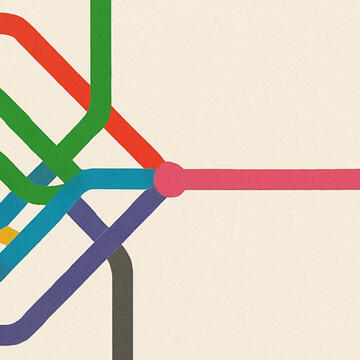
Signal Architecture
What Is Signal Architecture?Signal Architecture is is the design of verified, emotionally calibrated, actionable flows of information that communities can depend on as reliably as water, power, or transit.Information is infrastructure. Trust is architecture. Tone is engineering.The discipline emerged from real-world practice. For nearly 15 years, in disaster zones, fragile democracies, and collapsed information environments, a new kind of civic signal system began to take shape. This work was pioneered by Justin Auciello through platforms such as Jersey Shore Hurricane News, a humanitarian civic signal system in post-Maria Puerto Rico, and globally, strategic advising on Information Ecosystem Assessments with Internews.Signal as Infrastructure, Auciello’s book-in-progress, formally defines and documents the field.Today, Auciello is advancing Signal Architecture as both a field of practice and a replicable model, designing the Civic Signal Design Lab framework and developing Signal-in-a-Box toolkits for real-world deployment. The discipline also offers direct opportunities for institutional adoption, integration, and field training, helping scale resilience practices across sectors and regions.At its core, Signal Architecture treats information not as content, but as infrastructure.When official systems break down, people lose more than services. They lose orientation, trust, and the ability to act. Signal restores that capacity by providing verified, actionable, emotionally calibrated knowledge that communities can use to navigate uncertainty. This is what we call signal.Practitioners of this discipline, known as Signal Architects, operate across sectors. They design and maintain two-way, real-time systems that function when institutions fail, rebuild public trust, translate chaos into clarity, and connect communities on the ground to decision-makers through live feedback loops. Tone is engineered as carefully as code, maps, or protocols, with systems that work across platforms—online, offline, analog, and face-to-face.Signal Architecture draws deeply from multiple fields. From urban planning, it applies systems design, spatial trust, and infrastructure logic. From journalism, it carries truth-seeking, community knowledge, and verification. From humanitarian response, it brings trauma-aware communication under pressure. From civic tech, it builds participatory architecture and open systems. From emergency management, it employs command structure, risk communication, and field deployment. And from systems thinking, it integrates holistic and adaptive design.But it is not simply a fusion or repackaging of these elements. Signal Architecture reframes them as civic infrastructure, creating new roles, system blueprints, and operational frameworks to meet today’s challenges.The result is a discipline that builds what communities need most: trusted systems that can hold when everything else breaks down, and a steady foundation during periods of calm.Why It Matters NowThis work directly responds to today’s accelerating crises of disinformation, climate disruption, and institutional fragmentation. Communities everywhere face overlapping crises with little reliable orientation. Traditional institutions often move too slowly, operate in silos, or lack public trust.Signal Architecture helps fill this gap by building trust, strengthening connections, and restoring the public’s ability to act with clarity and confidence.It is not a passing trend. It is a discipline for this moment, and for what comes next.